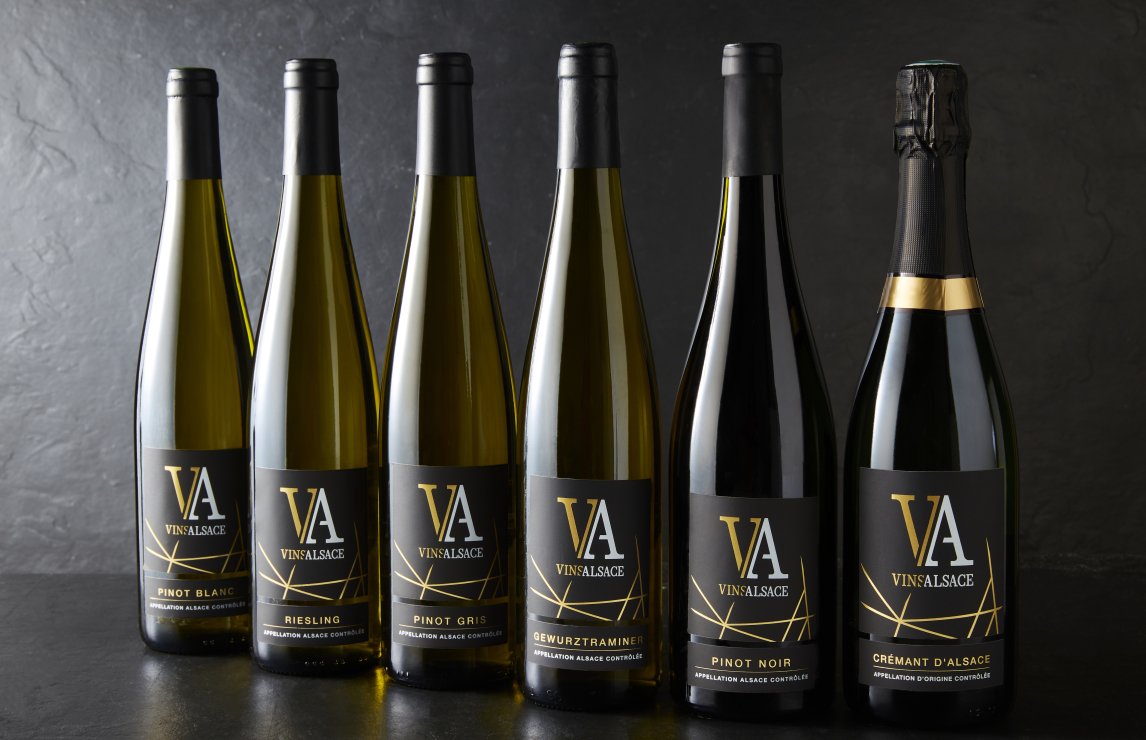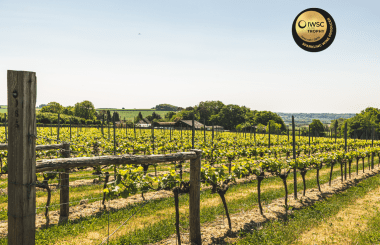Top picks from Alsace, selected by our experts - in partnership with CIVA
On 21st January, IWSC gathered an expert panel of top tasters including Margaret Rand, Eric Zwiebel MS & Rebecca Palmer, to taste through a selection of Alsation wines, in partnership with CIVA, and select just 8 stand-out examples to be included as part of a masterclass at Wine Paris. Below are the results...
How to encompass Alsace in eight wines? At first glance it doesn’t look that difficult – but then you think of a wide range of grape varieties and hundreds of different terroirs, and – well…
Alsace is evolving in the face of climate change and fashion. Pinot Blanc is often making way for Pinot Noir, led by demand for the grape and the wish of Alsace producers to make some red wine. Pinot Gris can have an acidity problem in hot years, though we tasted some splendid ones, with no lack of balance. Sylvaner can have heft as well as freshness; a surprise in a grape traditionally regarded here as light. Gewurztraminer is concentrated and terroir-driven, sometimes sweet, sometimes dry. Savagnin Rose, a gloriously exotic name for a pink-skinned version of Traminer without the gewurz, is making dry wines of richness and power, albeit not many of them. (They’re labelled in Alsace as Klevener de Heiligenstein.) Muscat is rare too but dry and convincing. All these are perfectly tailored for food, and if you want an aperitif, Crémant d’Alsace comes in different styles according to the grape.
But the greatest of them all is Riesling. This was the biggest category, the most regal, the most thrilling, the most varied, and the hardest from which to choose. What all the wines demonstrated is that Alsace’s claim to transmit terroir via grape variety is not mere words. These wines sang of their place, their limestone or granite or their extinct volcano. These are not ‘safe’ wines; they are wines with opinions, assertive but elegantly expressed.
Soils might be clay or gneiss, granite or limestone, marl, alluvium, sand, sandstone, schist, volcanic, or any combination that nature has evolved. Add to that elevation, aspect, wind and shadow and fog and sun, and you have a 3-D jigsaw that only the people who walk the land every day will really understand. We glimpse it refracted through the wines.
Alsace Pinot Noir – three wines tasted
That’s not many, to be sure. Climatically, Alsace is coming into its comfort zone for Pinot Noir, and ripeness is obviously not a problem. The use of oak was good and subtle, too. Pinot Noir is still an up-and-coming wine in the region but it clearly has an excellent future.
Domaine Huber & Bléger Pinot Noir Rouge Barrique 2022
Red berry and light spice flavours, soft but with a touch of grip. A straightforward, pleasing wine, well balanced; an all-rounder.
Crémant d’Alsace – eight wines tasted
Our brief here was to select a young wine and an older, more complex one. We had a range of grape varieties and blends to choose from: we opted for a Chardonnay and a Riesling.
Bestheim Crémant d’Alsace nv Extra Brut
This is the young Chardonnay, with lemon rind and ginger notes, bright and dry and with a fine bubble. Good length; delicate and fresh.
Frey-Sohler Crémant d’Alsace Riesling 2016
Riesling fizz should have no problem with ageing for a few years, and this has developed toasty, full flavours to balance its tension. Verbena richness on the mid-palate and a convincing finish.
Riesling – 20 wines tasted
And nearly all of them potential winners. This section provoked the longest discussion and the most unalloyed enjoyment. The only problem was to select just one young wine and one older one.
Domaine Jean-Marie Haag Alsace Vallée Noble Riesling 2022
We were particularly pleased to find such a good young Riesling from this village appellation. It’s a straightforward, open wine with good typicity, citrus and stone-fruit notes and good balance.
Gustave Lorentz Alsace Grand Cru Altenberg de Bergheim Riesling Vieilles Vignes 2020
When we looked for a complex Riesling the choice was almost too much. We settled on this concentrated, pure, tense, expressive wine from marl-limestone soil: it has spice, espelette pepper, white flowers, fine balance and a good future.
Other grape varieties – eight wines tasted
A wide-ranging section from which we picked two wines from varieties which are often under the radar in Alsace – but shouldn’t be.
Domaine Boeckel Alsace Grand Cru Zotzenberg Sylvaner 2022
There weren’t many Sylvaners to taste, but they were good: mineral, structured and textured. This one had a honeyed nose, lemon, lime and rose-petal notes and a luminous finish.
Clément et Matthieu Weck Alsace Grand Cru Goldert Muscat 2021
This was the only Muscat in the line-up, and it was unmissable. Grapey and rose-scented, of course, but also salty, mineral, delicate and tense, and with good drive and length.
Alsace Savagnin Rose and Gewurztraminer – five wines tasted
Seductive though the Savagnin Roses were, we opted for a Gewurztraminer because it was simply outstanding.
Domaine Rolly-Gassmann Alsace Vendanges Tardives Lieu-dit Oberer Weingarten de Rorschwihr Gewurztraminer 2015
A fantastic food wine: rich, concentrated, opulent, but fresh and moreish. If you want a list of its flavours, how about: roasted pineapple, mushroom, lychee, rose petal. Complex, in other words.



